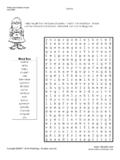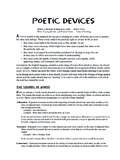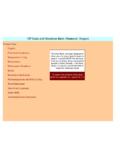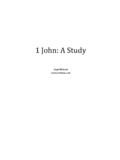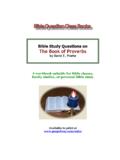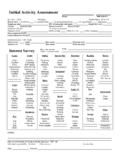Transcription of 1. About Interactive Writing
1 1. About InteractiveWritingWhat single teaching method can be used tosupport the development of phonological skillsand help children attach meaning to print? Howcan teachers develop a lesson that allows wholegroup instruction and individual attention at thesame time? How can the teacher practice skillswithout losing the excitement and enthusiasm ofthe class? How can we learn to read and write andstill have fun? The answer to these questions isinteractive Writing is a cooperative event in whichteacher and children jointly compose and write only do they share the decision About what theyare going to write, they also share the duties ofscribe. The teacher uses the Interactive Writing session to model reading and Writing strategiesas he or she engages children in creating text. Interactive Writing can be used to demonstrate concepts About print, develop strategies, andlearn how words work. It provides children with opportunities to hear sounds in words andconnect those sounds with corresponding letters.
2 Students are engaged in the encoding processof Writing and the decoding process of reading, all within the same piece of text. Interactivewriting is a unique opportunity to help children seethe relationship between reading and the Interactive Writing process, studentsand the teacher talk About what they are going towrite. The teacher serves as the facilitator of thediscussion guiding, modeling, adding,summarizing, confirming, combining, andsynthesizing the children s ideas. As the actualwriting begins, many opportunities for specificteaching are available. The goal is to get thechildren s thoughts on paper, discussing the topicand the process of Writing , dealing with theINTERACTIVE Writing & Interactive EDITING 1 INTERACTIVEWRITING IS:Negotiating the compositionof textsCollaborating in the construction of textUsing the conventions of printReading and rereading textsSearching, checking, andconfirming while readingand writingUSES OF Interactive WRITINGD irect and explicit instruction inphonology and word analysisTeach children how written text worksTeach children the connectionsbetween what we write and readconventions of print, and workingon grammar, spelling, punctuation,letter formation, phonics, andvoice.
3 As children become moreproficient writers, lessons can focuson style and Writing for differentpurposes. The finished Writing is displayed ina way that allows for continued useas a text for shared reading orindependent reading. The work isnot as neat as teacher Writing orcommercial posters, but childrenare more likely to use it as a sourceof information because of theownership that comes with their involvement in thewriting process. The goal of Interactive Writing isthat the skills learned will transfer to students independent Writing and support the developmentof reading skills as is no one right way to do Interactive Writing involves teacher choices basedon observation of student needs, and uses thegrade level curriculum and district and statestandards. Teachers can begin with basicprocedures and use Interactive Writing for moreadvanced purposes as they become more familiarwith the Interactive Writing & Interactive EDITINGVALUES OF Interactive WRITINGD emonstrates concepts aboutprint, early strategies, andhow words workProvides opportunities to hearsounds in words and connectsounds with lettersHelps children understand thedecoding and encodingprocess in reading and writingIncreases spelling knowledgeActivities Interactive Writing & Interactive EDITING 19 GoalStudents will recognize and name each letter of the of StudyLanguage ArtsInteractive Writing TypeInnovationResourcesVariety of alphabet books, sentence stripsPocket chart, name chartLessons Read aloud an alphabet book.
4 Choose a book that has arepetitive pattern and displays capital and lowercase lettersin enlarged text on each page. Determine that the class will create a literacy center, usingthe names of the students in the class. Establish a sentence pattern similar to the one in the write the sentence pattern on sentence stripsand display them in a pocket chart. Direct the students to write their names on individualsentence strips. Collect the strips. Choose one student s name card. Ask the students to namethe first letter of that student s name. Help the students to choose an animal name that begins withthe same letter to complete the student s sentence. Use alowercase letter as the first letter of that word. Write a matching capital and lowercase letter for each child ssentence. Read each sentence as it is completed. Forexample, Tt, My name is Tiana, and my best friend is atiger.
5 Complete this activity over several days. Model theprocedures of the center for the students. Remind them thatthe letter displayed must match the student s name and theanimal displayed. Reread different sentences often, emphasizing letter Have the students illustrate their own sentences. Use thesentences and illustrations to make a class book. Make name cards on sentence strips for each child. Takeattendance in the morning by showing each child s name andsaying, Good morning, Rebecca. Rebecca starts with R. Additional ResourcesBayer, J. A My Name is Alice. Penguin Putnam Books for YoungReaders, 1984. ISBN 0803701233 Carlson, J. ABC, I like Me. Viking Penguin, 1997. ISBN 0670874582 Slate, J. Miss Bindergarten Gets Ready for Kindergarten. NAL,1996. ISBN 0525454462 Activity 1 Alphabetic PrincipleLetter RecognitionStudents manipulate and readthese sentences About themselvesduring literacy Interactive WritingActivitiesActivities Interactive Writing & Interactive EDITING 25 GoalStudents will point to each word as it is read of StudyLanguage Arts, Social StudiesInteractive Writing TypeNegotiationResourcesVariety of books About farmsEnlarged picture of a farmerLessons Read aloud many books About farms.
6 Ask the students to share what they know About farmers. Talk About how farmers look and how their clothes and toolsare different than other community helpers. Using an enlarged shape of a farmer, negotiate labels for thefarmer s clothes. Make sure the labels include adjectives sothat the text is composed of short phrases rather than singlewords. As each new label is negotiated, make sure to count eachword so that the students are made of aware of wordboundaries. Reread the text with the students frequently, demonstratinghow to point to each word as it is read. Encourage the children to practice one-to-one matching byasking individuals to point and lead the class in Create a literacy center that allows students to practice one-to-one matching skills. Provide a variety of pointers that theycan use to Read the Room, pointing to words as they read. Encourage the students to write additional text About farmsand ResourcesBrown, Big Red Barn.
7 HarperCollins Children s Books,1989. ISBN 0060207485 Ember, K., and Kleinberg, N. Old MacDonald Had A Publishing Company, Inc., 1997. ISBN 0307988066 Sloat, T. Farmer Brown Goes Round and Round. DarlingKindersley Publishing, Inc., 1999. ISBN 0789425122 Tafuri, N. This Is The Farmer. Greenwillow Books, 1994. ISBN 0688094686 Waddell, M. Farmer Press, 1996. ISBN 1564025969 Activity 7 Concepts About PrintOne-to-one MatchingChildren oftenreturn to their ownwriting to readwhile pointingcarefully toeach Interactive Writing & Interactive EDITING 35 GoalStudents will hear and identify rhyming of StudyLanguage Arts, Nursery RhymesInteractive Writing TypeTranscriptionResourcesVarious nursery rhyme booksLarge shape of nursery rhyme characterMagna DoodleLessons Read aloud many nursery rhymes. Encourage the students tojoin in, singing and chanting rhymes. Reread the same rhymes many times, until the studentsbecome familiar with the nursery rhymes.
8 On subsequentreadings, pause at the rhyming words to see if the studentsbegin to supply missing words . As the students are able to recite each of the nursery rhymes,engage them in an Interactive Writing of the rhymes. Discuss the idea that we can write and read things that wethink and say. Talk About why the piece is called a rhyme, and point out thewords that rhyme. When Writing the rhyming words , elicit other rhyming wordsfrom the students. Write these additional rhyming words on the Magna Doodle,or have the students hear and recognize the rhyme at anaural Reduce the actual Interactive Writing piece on a copymachine. Make copies that the students can keep inindividual poetry books. Illustrate and read rhymes duringindependent reading time. Create literacy centers that focus on the nursery can recite the rhymes while manipulating flannelboard pieces, or they can create puppets to use for role-playing.
9 Create and paint nursery rhyme characters to add to theinteractive Writing display. Additional ResourcesOpie, I. My Mother Goose Library. Candlewick Press, 2000. ISBN 076361178 Trapani, I. The Itsy Bitsy Spider. Charlesbridge Publishing, Inc.,1992. ISBN 1879085771 Trelease, J., and Prelutsky, J. Read Aloud Rhymes For the VeryYoung. Alfred A. Knopf, 1986. ISBN 0394872185 Wright, B. F. The Real Mother Goose. Scholastic, Inc., 0590225170 Activity 17 Phonemic Awareness & Phonics RhymingThis nursery rhyme was sung, chanted, and readaloud many times before the actual interactivewriting lesson took Interactive Writing & Interactive EDITING 45 GoalStudents will learn to spell and read high frequency of StudyLanguage ArtsInteractive Writing TypeTranscriptionResourcesHigh interest texts of poetry that contain repeated use oftargeted high frequency wordsHighlighter tapeLessons Read aloud selections of poetry and focus on one poem thatthe students particularly enjoy.
10 Engage students in an Interactive Writing of the poem. Sincethe text does not have to be negotiated, the teacher andstudents are free to concentrate on specific high frequencywords. As targeted high frequency words come up in the text, pointthem out as words the students will see all the time whenthey are reading. Explain that this is why it is important forthem to learn to read and spell these words quickly andeasily. Teach the students how to learn to spell and read a newword. First, have them look at the correct spelling and form amental picture of the word. Then, have them write the wordin the air while spelling it aloud several times. Have thestudents close their eyes, visualize the word, write the word inthe air, and check the spelling against the correct spelling inthe Interactive Writing text. Explain that the students may use the same procedure whenlearning to spell any other word.
